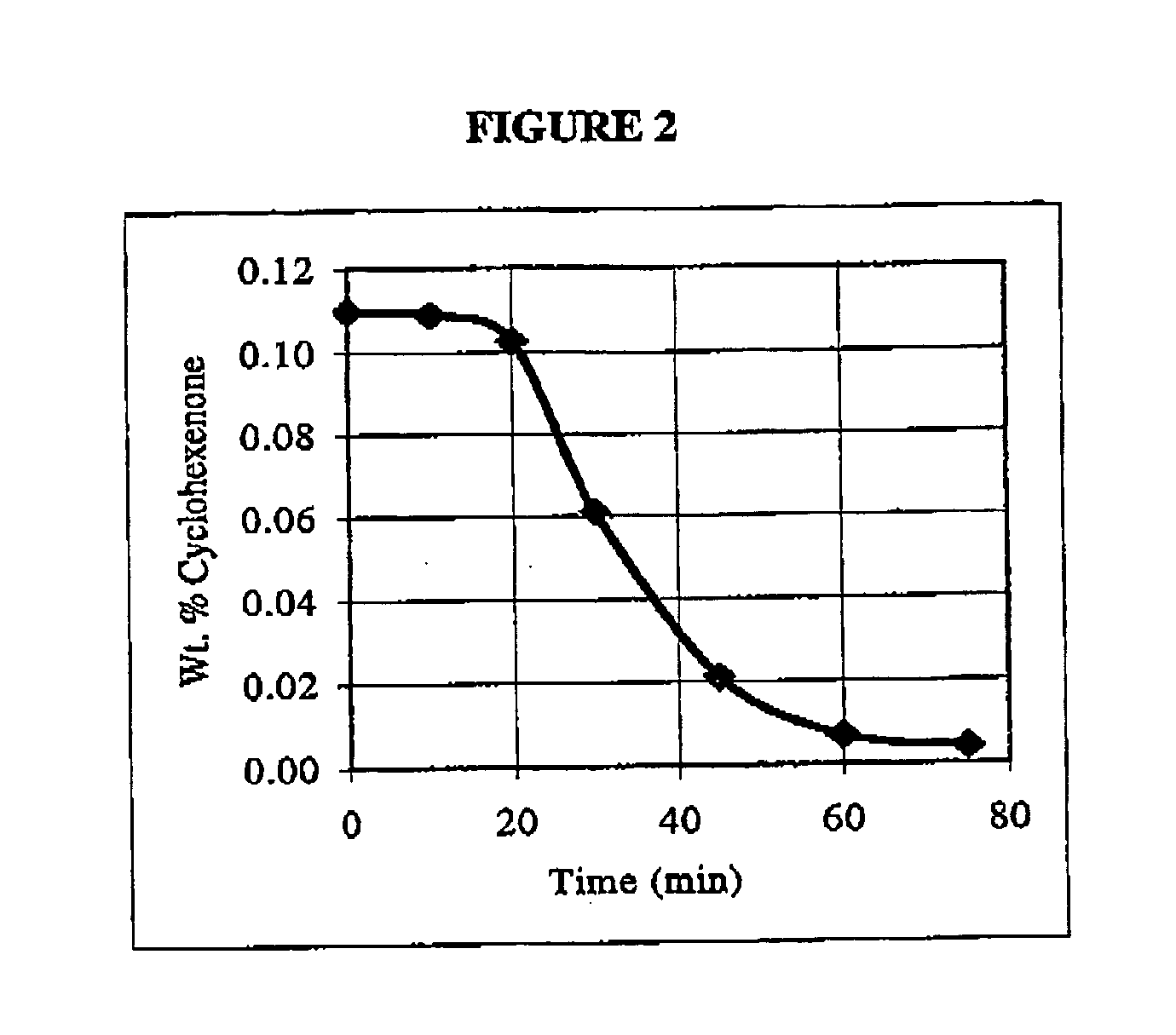Method for reducing cyclohexenone content of a cyclohexenone-containing organic mixture
a technology of organic mixture and cyclohexenone, which is applied in the field of reducing the concentration of cyclohexenone in can solve the problems of cyclohexenone from organic mixtures containing cyclohexenone, and the detrimental effect of 2-cyclohexene-1-one oxime, etc., and achieves the effect of reducing the content of cyclohexenon
- Summary
- Abstract
- Description
- Claims
- Application Information
AI Technical Summary
Benefits of technology
Problems solved by technology
Method used
Image
Examples
example 1
[0027] A 200 mL solution of KA oil containing 55.82 wt % cyclohexanone, 43.96 wt % cyclohexanol, and 0.22 wt % 2-cyclohexene-1-one was added to a 500 mL glass reactor provided with a heating mantle, stirring bar, temperature control, reflux condenser, and containing sample addition / withdrawing ports. The mixture was treated with 0.1 g of sodium hydrogen sulfite for 30 minutes at about 95 degrees C. under constant stirring.
[0028] The experiment was repeated, varying only the amount of sodium hydrogen sulfite added. The repeated experiments were conducted at levels of 0.25 g and 0.5 g of sodium hydrogen sulfite. A plot of cyclohexenone concentration in the organic mixture after the treatment as a function of the sodium hydrogen sulfite added is shown in FIG. 1. As FIG. 1 demonstrates, treating the organic mixture with sodium hydrogen sulfite for 30 minutes at 95 degrees C. may cause a reduction of up to about 90% of the initial cyclohexenone content.
example 2
[0029] Using the same experimental set-up as described in Example 1, a 200 mL mixture representing a cyclohexane oxidation mixture containing 65.19 wt % cyclohexane, 21.54 wt % cyclohexanone, 13.17 wt % cyclohexanol and 0.11 wt % 2-cyclohexene-1-one was charged to the reactor. 3 g of 25 wt % NaOH solution was also added. The mixture was heated to and maintained at 85 degrees C. for approximately 75 minutes while continuously stirring. The addition of the NaOH resulted in a decreased concentration of cyclohexenone in the mixture over time, the results of which are shown in FIG. 2. These results demonstrate that the cyclohexenone concentration in an organic mixture, such as an organic mixture that results from the oxidation of cyclohexane, may be reduced by approximately 96% using methods according to exemplary embodiments of the invention.
PUM
| Property | Measurement | Unit |
|---|---|---|
| Fraction | aaaaa | aaaaa |
| Fraction | aaaaa | aaaaa |
| Temperature | aaaaa | aaaaa |
Abstract
Description
Claims
Application Information
 Login to View More
Login to View More - R&D
- Intellectual Property
- Life Sciences
- Materials
- Tech Scout
- Unparalleled Data Quality
- Higher Quality Content
- 60% Fewer Hallucinations
Browse by: Latest US Patents, China's latest patents, Technical Efficacy Thesaurus, Application Domain, Technology Topic, Popular Technical Reports.
© 2025 PatSnap. All rights reserved.Legal|Privacy policy|Modern Slavery Act Transparency Statement|Sitemap|About US| Contact US: help@patsnap.com


